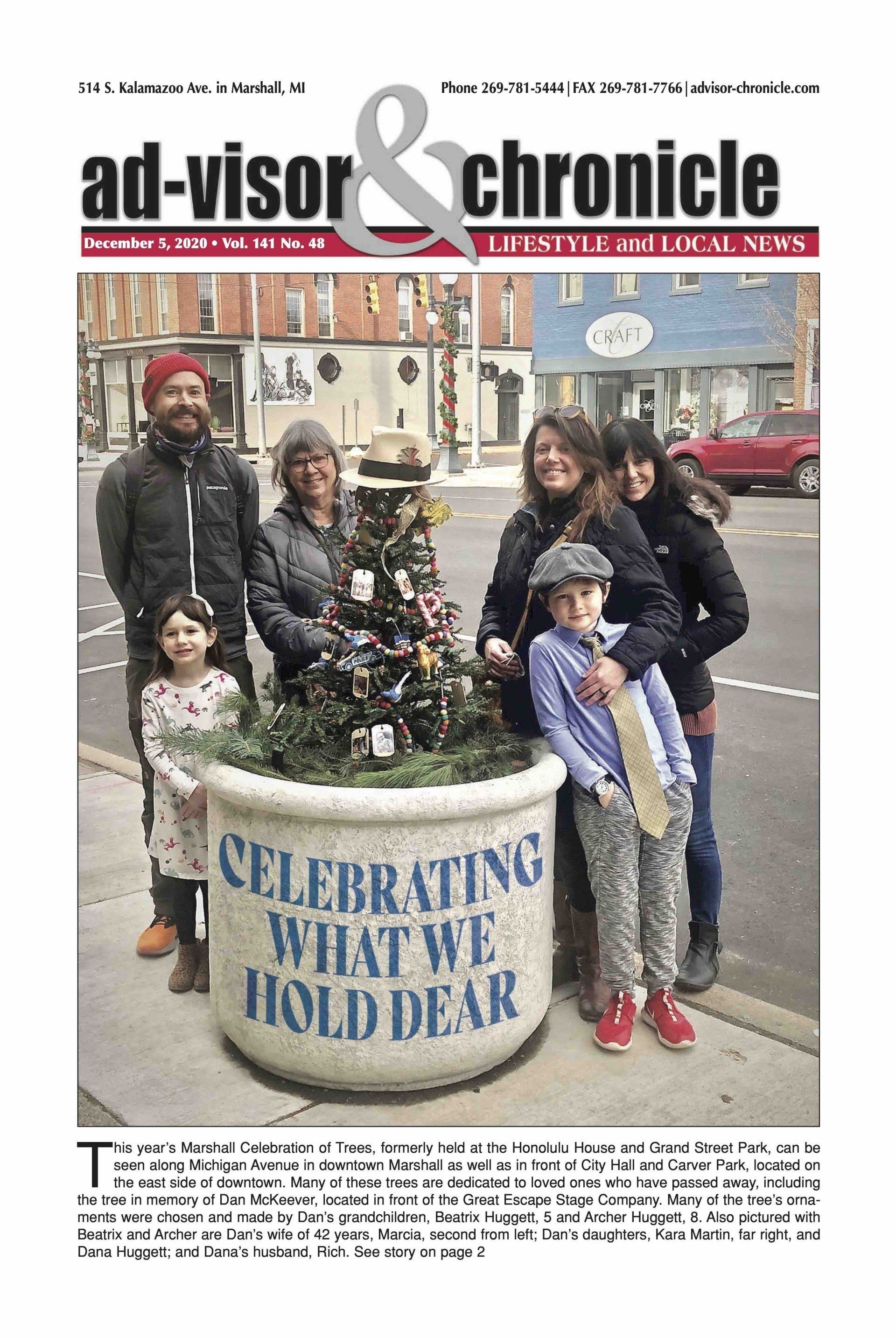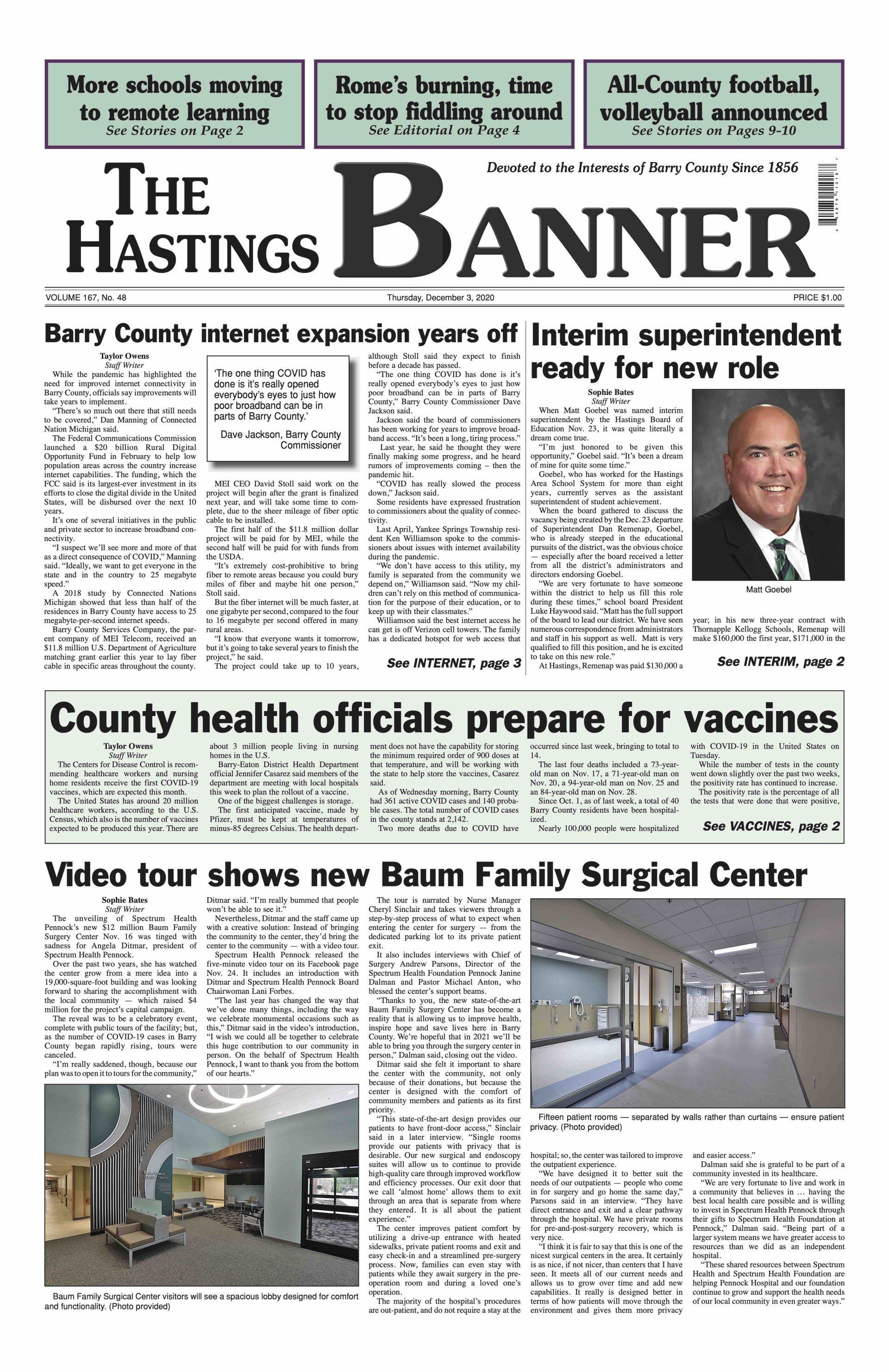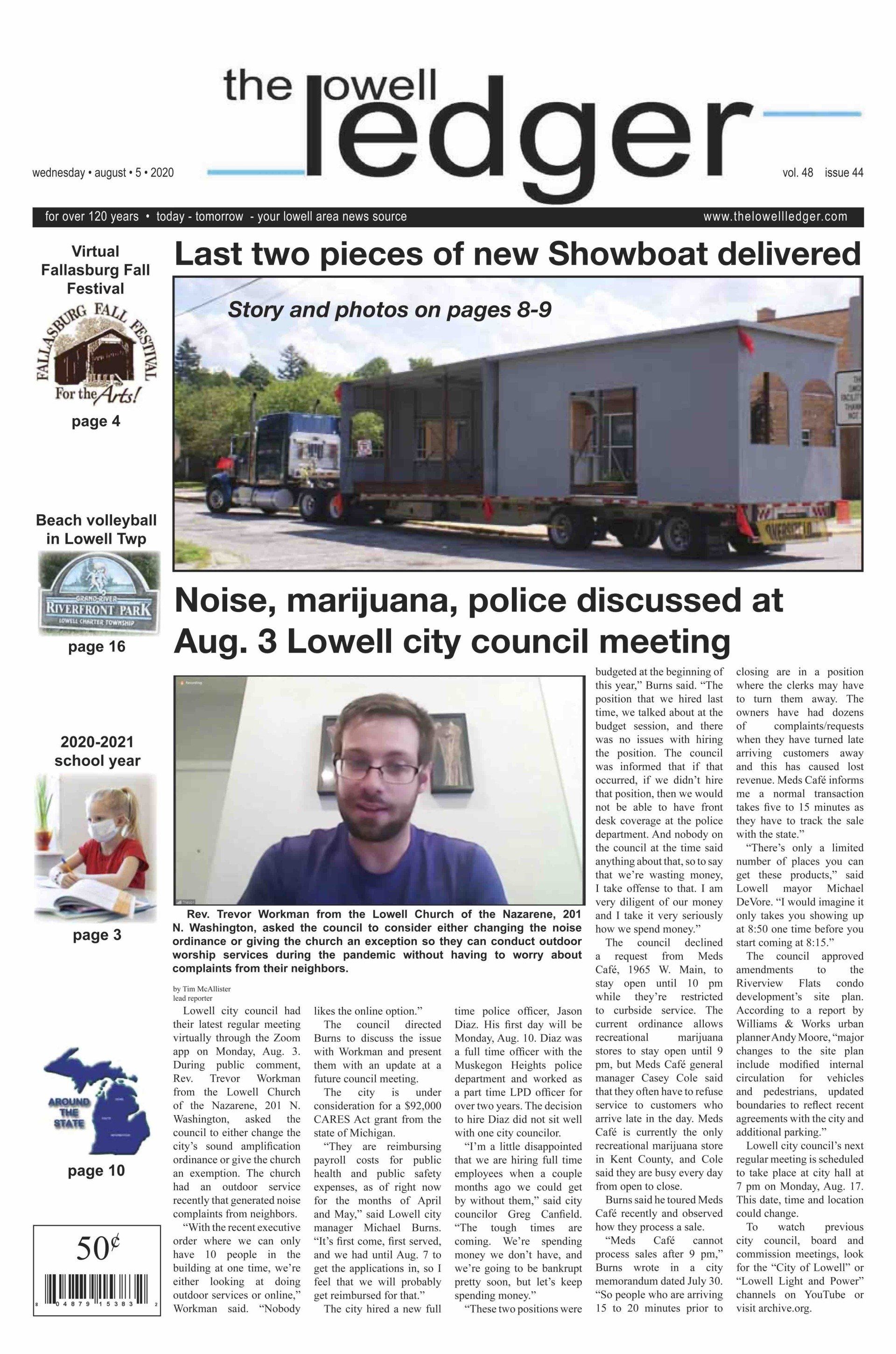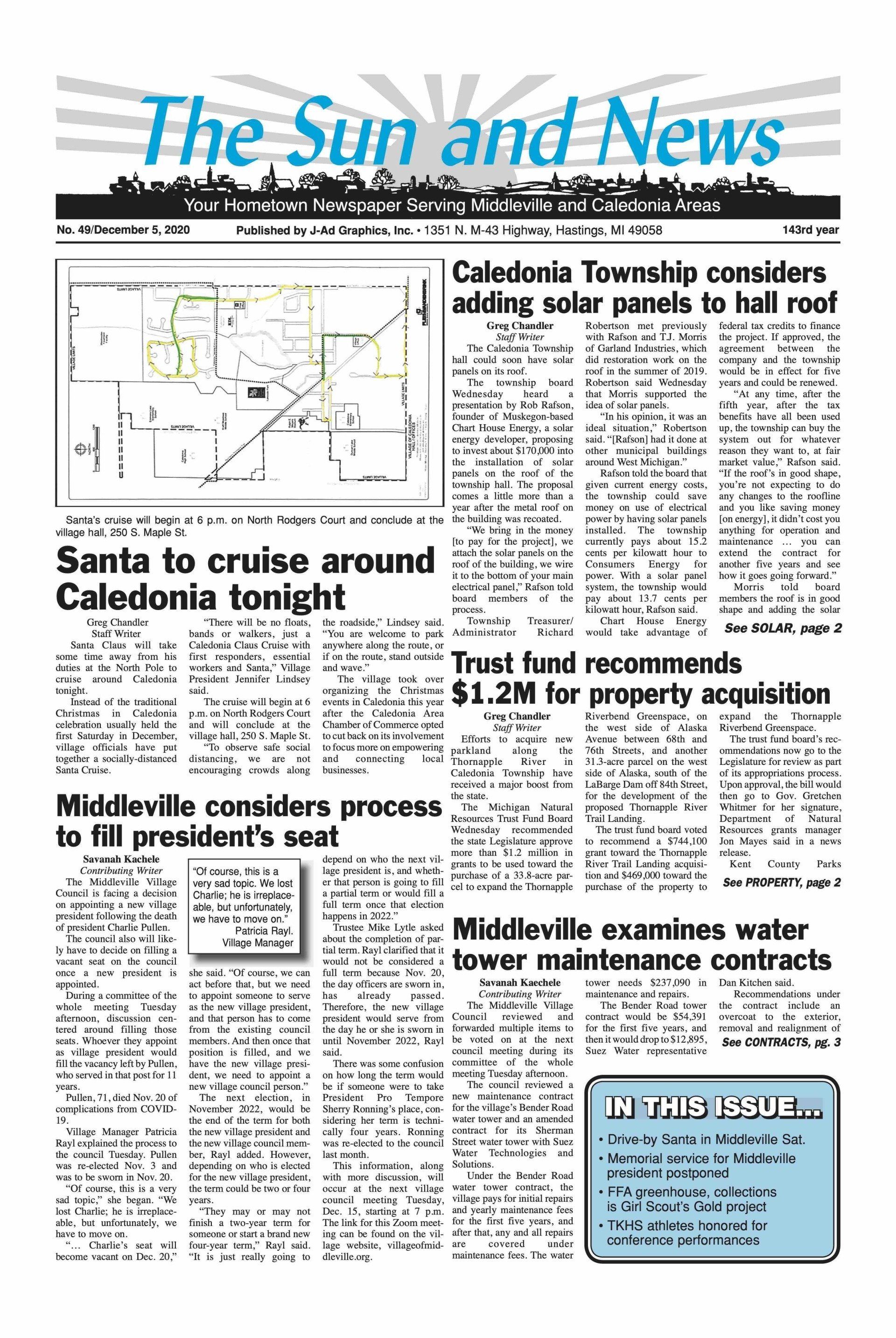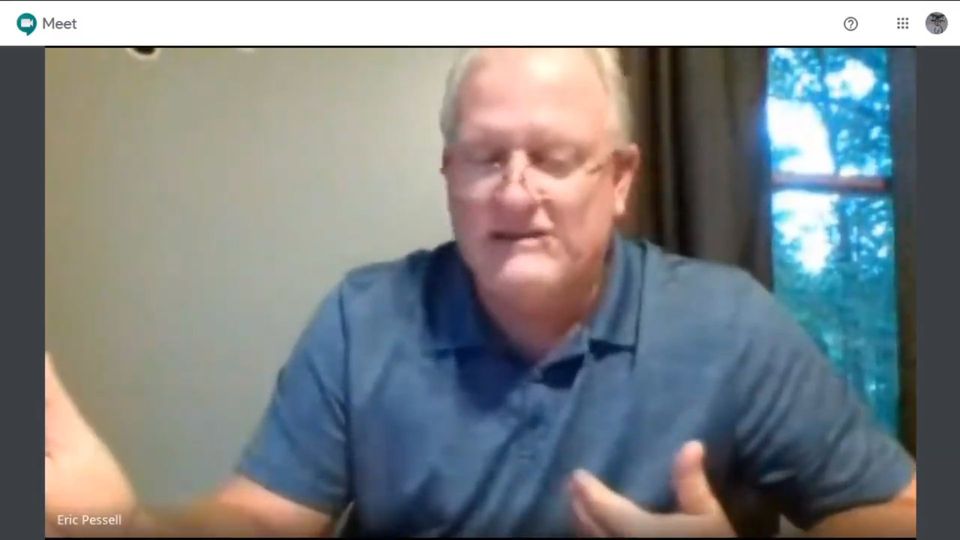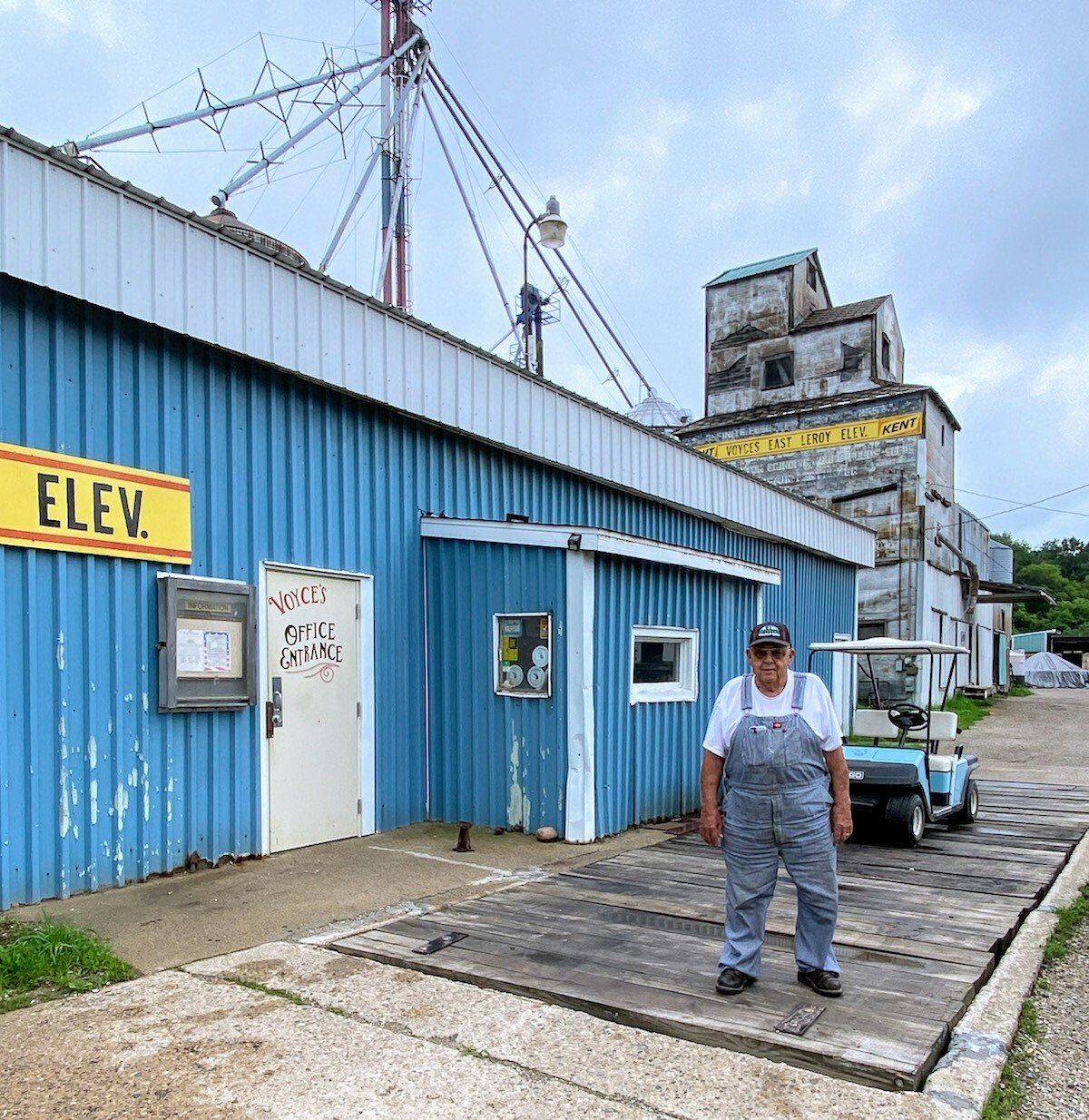Schools work to reduce risk for students
After weekly meetings by Calhoun County Health Department Officer Eric Pessell with all area school superintendents since early March, and, after he appeared on Zoom with the Harper Creek Community Schools Monday, Aug. 10, the district formally adopted its Return to School plan in a 4-3 board vote.
The plan calls for kindergarten through grades four to attend school in person five days a week, a hybrid model of two days in the classroom and three days distance learning for grades five through 12 and the option for all grades to attend school virtually.
All public school districts are required by the state to submit its plan by Aug. 15 and school is set to being Aug. 26 and Harper Creek’s plan is available on the district website, http://www.harpercreek.net/Families/h_c_roadmap_back_to_school.
Also on Monday night, the Pennfield Public Schools, the Board of Education Monday, which also heard from Pessell via live streaming, also passed their “Return to Learn Plan” which calls for a hybrid plan for kindergarten through grade five to attend school Mondays and Tuesday and Thursdays and Fridays with Wednesday off for cleaning while grade six through 12 will only attend school virtually.
Their Return to Learn plan can be found at https://www.pennfield.net/return-to-learn-information-site/.
Pessell updated the boards on the fact that while community spread of COVID-19, currently a global pandemic, is 22 cases per million in Calhoun County, what he called “low risk,” it still doesn’t mean that there is zero risk.
All of the area school districts have been consulting with Pessell and the guidance he shared with Harper Creek and Pennfield Monday was provided, he said, not to tell the districts how to proceed but to inform and to support their decisions.
“Based on some feedback I had at a previous board meeting,” said Pessell prior to Harper Creek’s vote, “I want to make it clear that my goal is not to recommend one way or the other the tough decision you all are going to have to make. What’s important I think what’s important is that you make the decision based on what’s best for your community, your students, your staff, and your school district.
“My promise to you and to Rob (superintendent Ridgeway) is that the public health department will be there to support and consult and continue to work with the school through whatever choice you ultimately make,” said Pessell.
Pessell advised the boards prior to their votes.
“What I’m looking at, what our team looks at on a daily basis,” he said, “I’m looking at percent positive is in Calhoun and I’m looking at our cases per million per day both of those are on the state website and available for anybody to look at daily.
“Today’s numbers we were at a 2.3 percent positive rate and we were at 22 cases per million per day...What does that mean? Basically, for every 100 people we would test right now, 2.3 would be positive, that is a low risk of percent positive.
“We are still seeing some community spread,” he continued, “some community transfer of the disease, it’s just not the same rate, the same percent positive as back in mid April.”
He added that doesn’t mean cases won’t spike, he said.
“But right now, we’re doing a pretty good job at least countywide of keeping this thing pushed down as best we can,” he said. “So, that’s the good news.”
The bad news is, he said, is that the state’s return to school plan is based on regions and based on the state.
“And there are still places in the state where what I would call hot spots where that percent positive rate is above five, maybe even above eight and the cases per million are above 40 and maybe even above 60 cases per million per day which are considered high risk for COVID transmission in that particular community,” he said without naming the community. “So, those are the numbers we look at. Right now, Calhoun is in pretty good shape. We always caution everybody that we’re speaking in, what we are asking people, is to follow that social distancing, follow the wearing the mask and follow good hygiene practices and we can continue to keep this thing below three percent and keep it as mild of a spread in our community as possible.”
As of Monday, Calhoun County reported 698 cumulative positive cases of COVID-19, the disease caused by the novel coronavrius, with 41 deaths and 110 people having been hospitalized for issues related to the disease, he said.
Pessell also addressed concerns about air conditioning and heating in the schools.
“I think it’s really important to get as much outdoor airflow as we possibly can,” said Pessell. “At the high school, (Harper Creek) the windows don’t open but when we’re talking about the stagnant air, .just adding a forceful fan in the room with the windows not being open, probably is not the best scenario unless the room temperatures get to a point where it just would make sense to get some air flow so I think we can decide 78, 80, whatever temperature you think is appropriate to turn a fan on.”
On masks, Pessell said: “Basically the guidance talks about...no one under age 2, anybody that has trouble breathing or is unconscious or incapacitated or unable to remove a mask without assistance are reasons you would wear a mask but the important part is we are talking about tiny droplets.
“And, I’ve explained this to the superintendents multiple times,” he continued, “but this virus, it can’t fly, it can’t run, it can’t walk, it doesn’t have arms, it doesn’t have feet or legs, it has to hitch a ride and it hitches a ride on the small, tiny water droplets either on our breath or it comes up from our lungs when we cough or sneeze.
“And, it rides on those droplets and if you’re not wearing that face covering it can send spray into the air and infect somebody that’s close by.
“That’s why the face coverings are so important for the folks who are positive and maybe don’t know it,” Pessell continued. “Maybe they haven’t even started to have symptoms yet but they’re going to in a couple days. Certainly, our recommendation is anybody that can tolerate the mask, wear a mask.”
Michigan Executive Order 2020-164 requires all staff and children ages 2 and up to wear a face covering on a school bus or other transportation.
Additionally, all staff of childcare centers and camps and children ages 4 and up must wear a face covering in all indoor common spaces.
All staff and all children 12 and older are required to wear a face covering when in classrooms, homes, cabins, or similar indoor small-group settings.
The governor also strongly encouraged that all children ages 2 and up wear face coverings when indoors.
These rules align with the existing rules on face coverings that already apply to pre-K-12 schools across Michigan, according to a Friday press release from the office of Governor Gretchen Whitmer.
If a child-care center is located in a region in Phase 5 of the MI Safe Start Plan, face coverings are not required, but are still strongly recommended.
Furthermore, face coverings are not required for any child who cannot medically tolerate it, during meal time, while swimming, during high-intensity activities, outside while physically distanced, or if a child is under the age of 2.
“I know it’s not a requirement,” said Pessell to the Harper Creek board, “but as I described for Rob, when you’re talking about wearing a mask, these little kiddos, they’re going to be playing with the mask, pulling it off, they’re probably going to snap it like a rubber band, we know all those stories. What’s important is, some wearing of that mask is better than no wearing of that mask and I think that’s where our recommendation comes down to. They have to wear it on a bus, they have to wear it when they’re walking down a hallway. If we can try to get them to wear it for as long as possible in a classroom, I think that can go a long way in helping reduce the risk in that particular classroom. “If they’re wearing that face covering, it will protect the rest of the people from their droplets traveling across the room. Understanding, we’re probably not going to get 100 percent. That’s just a reality.”
One board member asked if there was any truth to information she has heard that masks do not prevent people from sharing air if they are in close contact for more than 15 or 20 minutes.
“When we’re doing the contact tracing side of this, if we have a positive student that was wearing a mask,” he said, “and the other students around were wearing a mask, we cannot assume that the mask was protective because it’s not 100 percent, we know that going into it.
“Some studies are saying maybe 70 percent protective if everyone’s wearing them so we’re still going to have to quarantine people that are considered close contacts, even if they were wearing a mask.
“I think that’s probably where it’s coming from,” he said. “If you’re in there longer than 15 minutes, the six foot social distance is really important when we’re looking at contact tracing. If you’re less than six feet for more than 15 minutes, if somebody was positive, we’re going to assume the person next to them was exposed. That’s just the way that exposure works and contact tracing.”
Though he declined to answer one board member’s question about what his personal feeling is about starting school, Pessell did respond that the boards have to determine what level of risk is acceptable.
“I do think, though, and I spoke about it at other board meetings, there’s an understanding as a collective group, society, community, need to understand that there is no such thing as zero risk,” said Pessell. “And so what you’re grappling with is what is the acceptable risk to be able to do something? I think you have to weigh more factors than just the COVID itself. I understand that, I’m not an educator, I don’t know all the intricacies and the ins and outs about how best to educate the students, that’s what you experts are for and Rob and his team are for but I just think you have to weigh all those together and make the best decision you can knowing that whatever plan you do that would have an in person element, that you’re doing whatever you can to reduce the risk, mitigate the risk but you can’t eliminate the risk. I think everyone just needs to understand that.”
When asked how the health department would decide whether to close a school, Pessell explained that this situation is different from other outbreaks such as influenza.
“When we have absenteeism. The school reports absenteeism to us weekly. It’s a requirement that they have to do and we look at that and at some point, sometimes you hear of school closures because of illness,” Pessell said. “What happened there is that was a discussion between the health department and the school that said you are upwards of 20 to 25 percent of your school is out due to illness due to influenza or whatever it is and the decision is made at some point to shut it down.”
The difference, he said, is with COVID-19, in person teachers could become quarantine due to exposure and unable to work.
“In person, you still have to have staff to teach the class,” he said, “and if for some reason there was a situation with too many staff was in quarantine, you could find yourself in a situation where you can’t open doors because you have too many staff out. I think that’s the caveat difference between flu absenteeism and covid that could possibly happen.”
Pessell said district screening comes down to three ways someone could return to school.
“You can get tested for COVID and a negative test would allow them to come back,” he said. “Rob and his staff and the nursing staff do have the Managing Communicable Disease in a School document that talks about what types of symptoms, non COVID, that would allow you to return after a basic, you know, if you have a fever something along those lines.
“But if we believe they failed for COVID reasons, the test is one way, a doctor’s diagnosis of something else is another way they could return or, they isolate for 10 days themselves before they return. Those are really the three ways that somebody that fails that screening can return back to class.”

